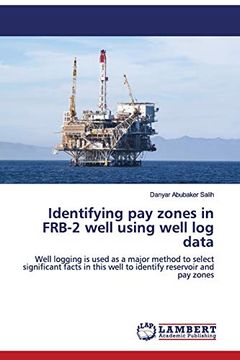Share
Identifying pay Zones in Frb-2 Well Using Well log Data: Well Logging is Used as a Major Method to Select Significant Facts in This Well to Identify Reservoir and pay Zones
Danyar Abubaker Salih (Author)
·
Lap Lambert Academic Publishing
· Paperback
Identifying pay Zones in Frb-2 Well Using Well log Data: Well Logging is Used as a Major Method to Select Significant Facts in This Well to Identify Reservoir and pay Zones - Danyar Abubaker Salih
Choose the list to add your product or create one New List
✓ Product added successfully to the Wishlist.
Go to My Wishlists
Origin: U.S.A.
(Import costs included in the price)
It will be shipped from our warehouse between
Friday, July 26 and
Friday, August 02.
You will receive it anywhere in United Kingdom between 1 and 3 business days after shipment.
Synopsis "Identifying pay Zones in Frb-2 Well Using Well log Data: Well Logging is Used as a Major Method to Select Significant Facts in This Well to Identify Reservoir and pay Zones"
In order to determine the porosity, reservoir characteristics and pay zones within the reservoir intervals. Two different porosity logs were used, they are density and neutron logs. According to the porosity logs density and neutron logs, the FRB-2 well has significantly divided to three major intervals, that are acting as a good to very good porosity or reservoirs, because their porosity values are ranging from 15% to 20% at the depths of 7592ft to 7840ft, 7860ft to 7880ft and 8104ft to 8200ft. Additionally, the combination of density and neutron logs are also used to acquire the better result of porosity data and then identify the porous and pay zones in a certain depth of the well. Then, the resistivity log is also used in order to obtain more data about the selected depth. This log shows that the well contains hydrocarbons in the reservoir intervals, this is identified based on the resistivity data. The value of 240 Ωm of resistivity log records at the depth of 7598ft. The resistivity is continuing as a high value to the depth of about 7740ft. The second zone’s resistivity value is also high; the range is between 400Ωm: and the highest value records at the depth of 8320ft.
- 0% (0)
- 0% (0)
- 0% (0)
- 0% (0)
- 0% (0)
All books in our catalog are Original.
The book is written in English.
The binding of this edition is Paperback.
✓ Producto agregado correctamente al carro, Ir a Pagar.

